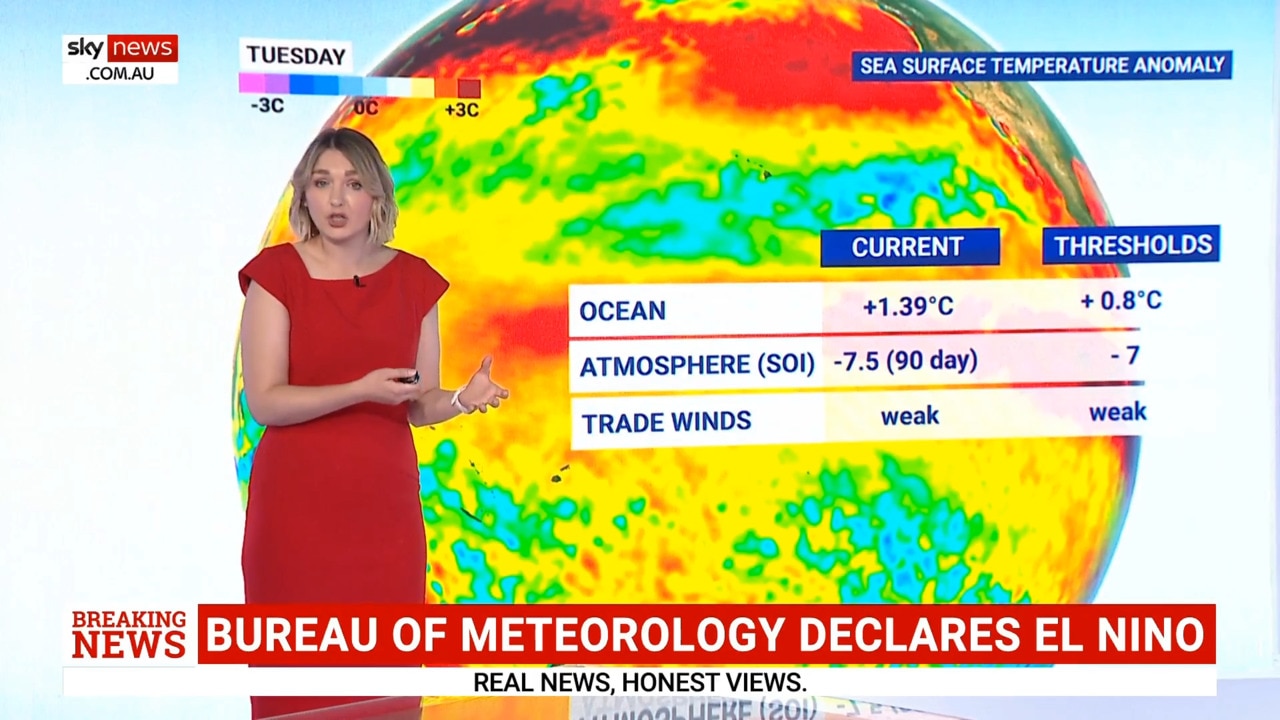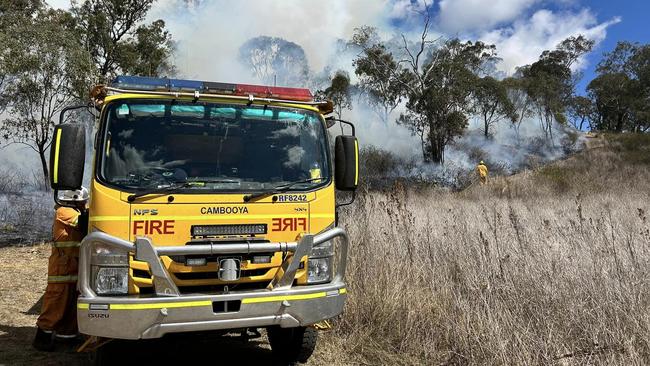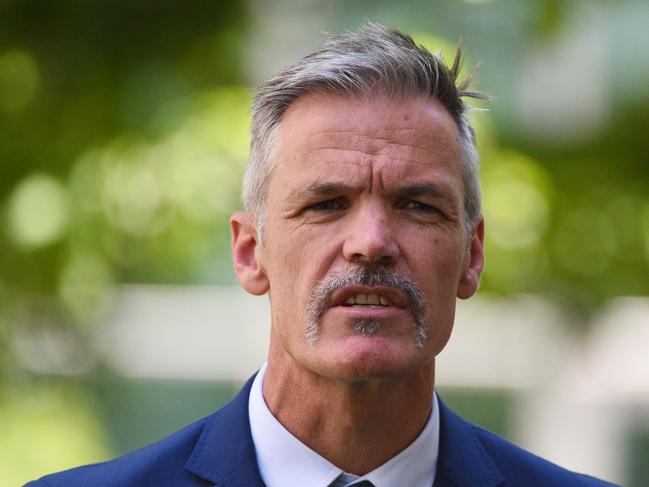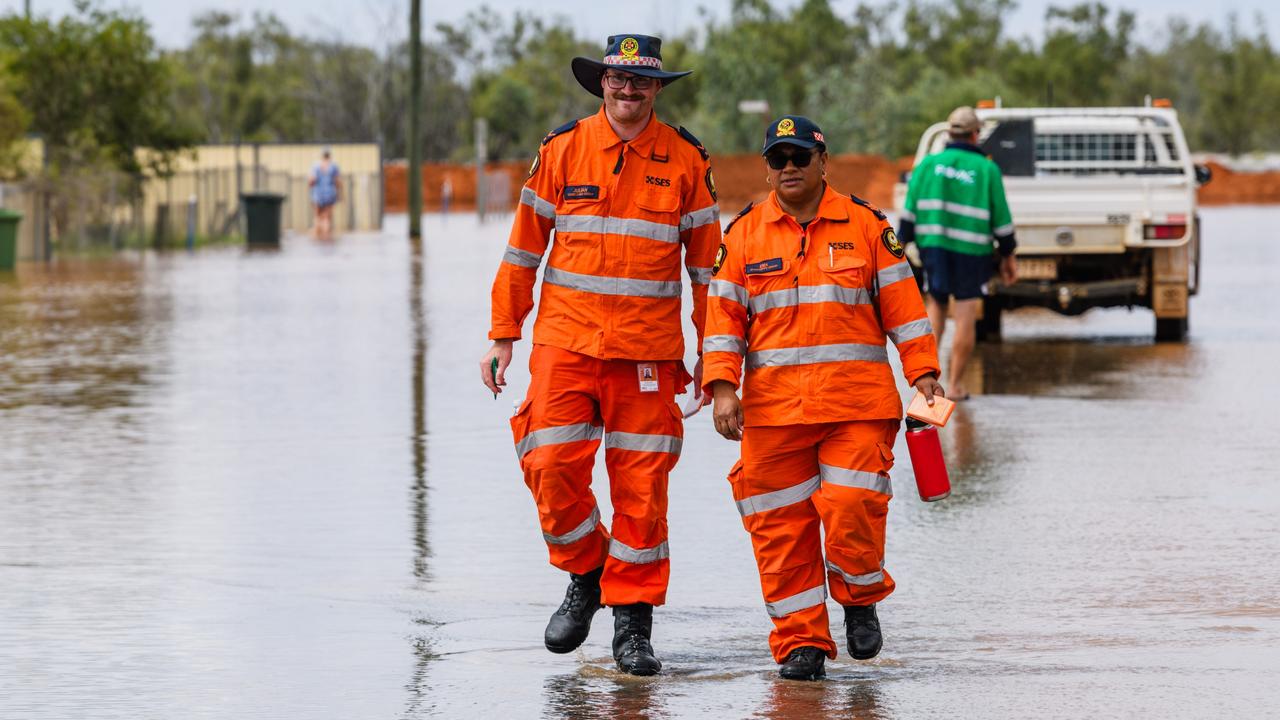Bureau of Meteorology declares El Nino has arrived in Australia
We name cyclones, but not heatwaves, which kill far more people. With a hot and dry El Nino summer on its way, should we start? Have your say.

Environment
Don't miss out on the headlines from Environment. Followed categories will be added to My News.
Tuesday’s official declaration that Australia is now in an El Nino climate phase has revived calls for the Bureau of Meteorology to adopt the practice of naming heatwaves, as they do with cyclones.
Dr Kate Wylie from the group Doctors for the Environment said heatwaves had “serious health impacts” and the recent hot days were “placing the people of Australia at risk of harm”.
“In the last summer in Europe the idea of naming heatwaves was put forward to increase the awareness of heatwaves, in recognition of their serious impacts for communities. By giving warning of a heatwave, people can act to protect themselves from the heat, keeping themselves and their families safe,” Dr Wylie said.
Dr Simon Bradshaw from the Climate Council said there was “some preliminary evidence” naming heatwaves “encouraged people to take them more seriously” and it was worth considering adopting the practice here.
“More Australians die of extreme heat than any other natural hazard, and anything that can help us be better prepared is important,” he said.
Associate Professor Sebastian Pfautsch, who researches extreme heat at the University of Western Sydney, said there was no national or international definition about what constituted a heatwave, and this was “a big problem”.
“It took decades to develop the naming system for storms. With the impacts of extreme heat events affecting communities right now, we don’t have decades to work this out,” he said.
“We need to account for different types of heatwaves – summer heatwaves, winter heatwaves, and as we just experienced, also spring heatwaves.”
A Bureau of Meteorology spokesperson said there were no plans to name heatwaves in Australia, because of their complex nature.
“There are several levels of heatwave severity – severe, extreme (for which warnings are provided) and low-intensity heatwaves. In some instances, there can be multiple heatwaves across an Australian state/territory,” the spokesperson said.
Last summer there were 291 heatwaves nationally, the Bureau stated.


On Tuesday the Bureau declared an El Nino for the first time in Australia in seven years, with the hot and dry weather conditions that have prevailed over the past week set to dominate for the rest of 2023.
Most international climate organisations had forecast an El Nino for the second half of 2023 as far back as July, but the Bureau of Meteorology held off until the release of its latest Climate Driver Update on Tuesday, which stated that an El Nino and a positive Indian Ocean Dipole were both now underway.
Both conditions are associated with hotter and drier weather across southern and eastern Australia, as well as the increased likelihood of heatwaves, droughts, bushfire conditions and bleaching on coral reefs.
Australia’s last El Nino was in the summer of 2015/16, while our last three summers have been dominated by the cooler, wetter La Nina climatic phenomenon.
In its updated advice, the Bureau said the confirmation of an El Nino event increased the likelihood it would continue throughout summer until the end of February.
“When a positive IOD [Indian Ocean Dipole] and El Nino occur together, their drying effect is typically stronger and more widespread across Australia,” the Bureau warned.
The declaration comes after an unusually long spell of warm spring weather, with several climate records falling and the mercury spiking 15°C above average in some areas.
A catastrophic fire warning was announced for the NSW south coast on Tuesday, while firefighters were battling blazes in the Northern Territory, Queensland and New South Wales.
Conditions in the capital cities are expected to moderate in coming days, with cooler temperatures and an increased chain of rainfall expected in Melbourne and Adelaide on Wednesday, Sydney and Canberra on Thursday and Brisbane on Friday.

Senior Lecturer in Climate Science at the University of Melbourne Dr Andrew King said the recent hot weather “is a warning of the kind of extremes we’re likely to see more of over the next few months”.
“Coming on the back of consecutive La Nina events, this spring will likely be very different and we need to be prepared for more heat, drought and fire weather conditions,” Dr King said.
Greg Mullins, the leader of Emergency Leaders for Climate Action and a member of the Climate Council, described an El Nino as “like putting fire weather on steroids”.
“With the warmer and drier conditions it usually brings, we could be looking at an extended and potentially volatile fire season,” he said.
Others were not so sure.
Dr Nandini Ramesh, a Senior Research Scientist at CSIRO, said bushfire preparedness was “crucial”, but three years of heavy rain thanks to La Nina conditions had “provided us with a buffer against drought, with soil moisture and reservoir levels still high’.

“While the risk of fire weather is higher and preparedness is crucial, this buffer means that we are not necessarily guaranteed a catastrophic fire season this year,” Dr Ramesh said.
National Farmers Federation CEO Tony Maher said El Nino conditions meant “additional hardship and severe difficulties for farmers right across Australia”.
“Right now in many parts of the country people are seeing crops drying off, landscapes are drying off, and there are increasing reports of farmers buying in feed. This is on top of a significant drop in livestock prices, coupled with a doubling of interest rates,” he said.
“If El Nino means drought conditions for farmers, it’s shaping up to be a really dificult time for the agriculture sector.”

Rural Aid CEO John Warlters said the Bureau’s announcement confirmed many producers’ fears, and encouraging farmers in need to reach out for assistance online at www.ruralaid.org.au or by calling 1300 327 624.
“Today’s announcement of the El Nino weather pattern will bring a lot of unwelcome memories to the surface for our farmers, who’ve been anxiously watching land and waterways dry up,” he said.
“Thousands of farmers are already managing their land with a view to drought, but today’s announcement makes that approach all the more important.”
“The past drought was regarded as the worst in living memory for the majority of the country, and it’s understandable that many farmers are scared of going through that again.”
More Coverage
Originally published as Bureau of Meteorology declares El Nino has arrived in Australia





